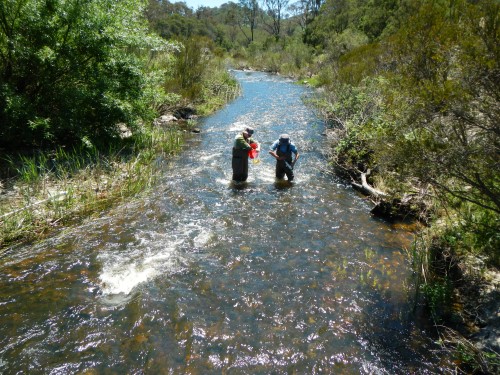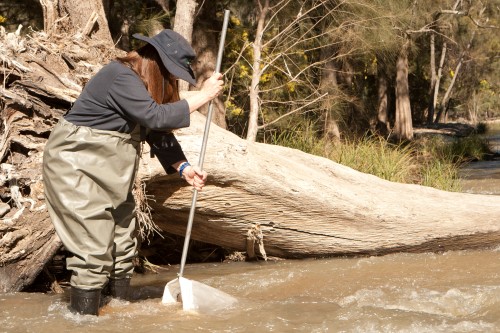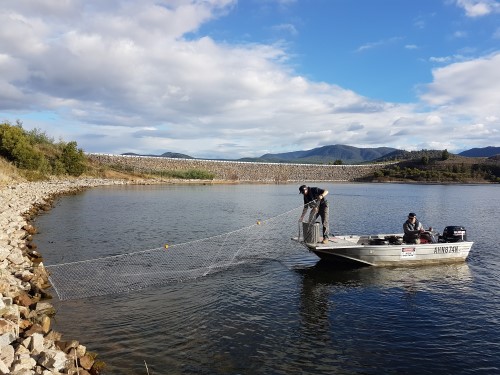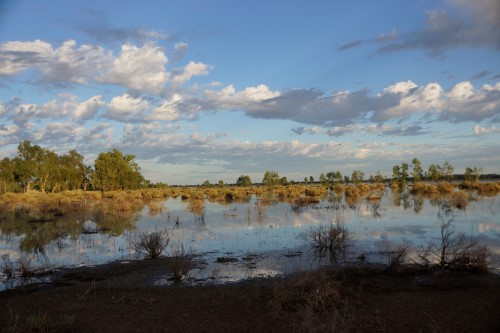Water Science
Our water science team aims to increase our understanding of freshwater systems to better inform management and policy decisions.
We study the fundamental ecology of Australia's freshwater systems and apply this knowledge to environmental problems. Increasingly our researchers work in partnerships across disciplines, research organisations and agencies to generate integrated solutions to water science challenges.
What we do
- Develop and implement monitoring and assessment programs for freshwater systems at local, regional and national scales
- Contribute to environmental flow management – design, monitor and evaluate
- Understand Australia's freshwater biota, both native and invasive, including conservation of fish, reptiles and amphibians
- Develop and apply Eco Evidence, a rapid evidence-synthesis framework for evidence-based approaches to enable the incorporation of 'best available science' in management and policy development
- AUSRIVAS training, accreditation and model development.
- Research to understand how human activities have influenced freshwater systems
- Understand the geomorphology of a freshwater system, and the role of erosion and sediment transport
Our facilities
- Experimental aquatic research facility
- ‘Wet’ and ‘dry’ lab for aquatic ecology and geomorphology research, including macroinvertebrate identifications
- Passive and active fish survey equipment
- Various water craft
- Aquarium space
Our partners
We are a formal partner of the Australian Water Partnership, which is headquartered at the University of Canberra. We also host eWater and a node for the Murray Darling Freshwater Research Centre, and work closely with staff from federal and state agencies.
Find out more about water science at the IAE by visiting the Centre for Applied Water Science website.
River bio-assessment and monitoring
 If you want to manage river health, you have to measure it. IAE researchers are leaders in rapid bio-assessment, and played a key role in the development of nationwide protocols such as AUSRIVAS.
If you want to manage river health, you have to measure it. IAE researchers are leaders in rapid bio-assessment, and played a key role in the development of nationwide protocols such as AUSRIVAS.
The IAE are currently involved in a number of bio-assessment programs, some of which have been ongoing since the late 1990’s. By assessing water chemistry, microbiology, periphyton and macroinvertebrates the IAE provides valuable input into management programs, and evaluates the effects and recovery from anthropogenic influences. Project deliverables include the preparation of scientific progress reports, and long-term data reviews.
Photo Credit: Ben Broadhurst
Diagnosing river health using invertebrate traits and DNA barcodes
 Current river assessment methods are based on aquatic invertebrates and can identify if a river is impaired, but not the cause of decline. An Australian Research Council funded project led by the IAE aims to develop indices that link changes in invertebrate communities to specific environmental stressors.
Current river assessment methods are based on aquatic invertebrates and can identify if a river is impaired, but not the cause of decline. An Australian Research Council funded project led by the IAE aims to develop indices that link changes in invertebrate communities to specific environmental stressors.
The research uses organism traits, such as lifespan, physiology and stress sensitivity to identify the causes of ecological degradation. The project draws on a DNA library barcode system and allows researchers to rapidly determine which organisms are present in a water sample. The methods developed through this project will help inform sustainable water resource management, aid in effective use of limited resources to arrest and to reverse environmental decline, and to meet evolving management and policy needs.
Photo Credit: Sue Nichols
Enlarged Cotter Reservoir Ecological Monitoring Program
 Ongoing drought and its threat to water security in the ACT resulted in the expansion of Cotter Reservoir from 4 to 78 GL. Reservoir enlargement was expected to affect two threatened fish species, Two-spined blackfish (Gadopsis bispinosus), and Macquarie perch (Macquaria australasica), the latter being one of only a few remaining self-sustaining populations.
Ongoing drought and its threat to water security in the ACT resulted in the expansion of Cotter Reservoir from 4 to 78 GL. Reservoir enlargement was expected to affect two threatened fish species, Two-spined blackfish (Gadopsis bispinosus), and Macquarie perch (Macquaria australasica), the latter being one of only a few remaining self-sustaining populations.
In 2010 IAE researchers began an assessment program to determine the impact of the inundation and operation on the two species, and potential threats (predators and competitors) in the reservoir and river upstream. Data collected is used to inform an adaptive management strategy to ensure protection of the two species.
Photo Credit: Ugyen Lhendup
Lower Lachlan River Long term intervention and monitoring

The project involves significant collaboration with partners from industry, the NSW state government and other universities. Each year fish, vegetation and stream metabolic processes are monitored. Our partners from UNSW and CSU collaborate to monitor waterbirds and frogs in relation to specific watering actions. The results from our monitoring and evaluation have been used to actively design environmental flow releases, including flows to promote native fish spawning and vegetation health.
Photo Credit: Fiona Dyer

